UPSC Exam > UPSC Notes > Geography for UPSC CSE > Cheat Sheet: Agriculture
Cheat Sheet: Agriculture | Geography for UPSC CSE PDF Download
Meaning and Scope
- Agriculture is the science and art of cultivation of land, crops, and livestock.
- Includes crop production, horticulture, animal husbandry, fisheries, forestry, and agroforestry.
- Foundation of civilizations, still vital to food security, employment, and economy.
Types of Agriculture
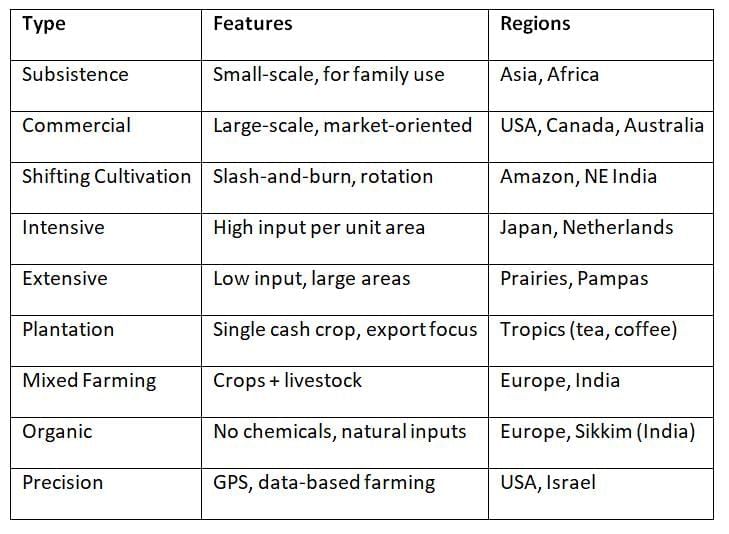
Agricultural Systems (Globally)
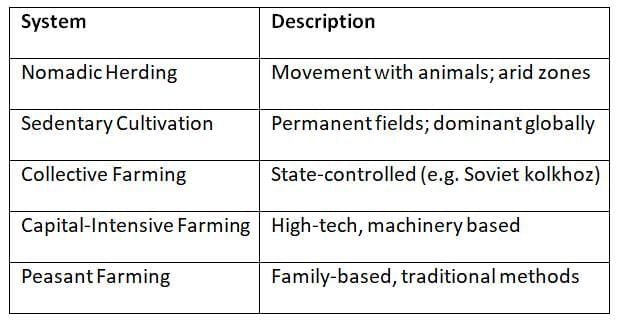
Major Crop Zones (Global)
- Wheat: Temperate zones — USA, Russia, India, Canada
- Rice: Monsoon Asia — China, India, Bangladesh
- Maize: Americas — USA (Corn Belt), Brazil
- Cotton: Subtropics — India, USA, China
- Coffee: Tropics — Brazil, Vietnam, Ethiopia
- Tea: Humid tropics — China, India, Sri Lanka
Factors Affecting Agriculture
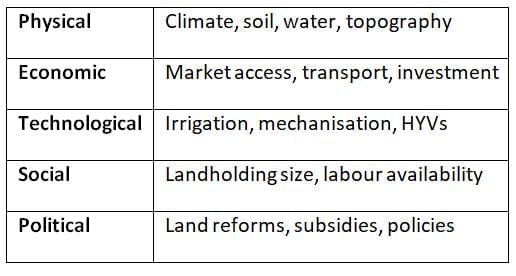
Agricultural Inputs
- Land – fertility, size, irrigation
- Labour – human or machine
- Capital – fertilizers, tools, seeds
- Management – knowledge, strategy
- Technology – GIS, AI, biotechnology
Agricultural Regions (Derwent Whittlesey’s Model)
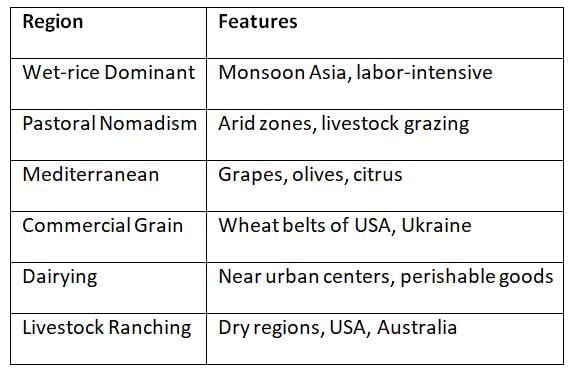
Sustainable & Modern Agriculture
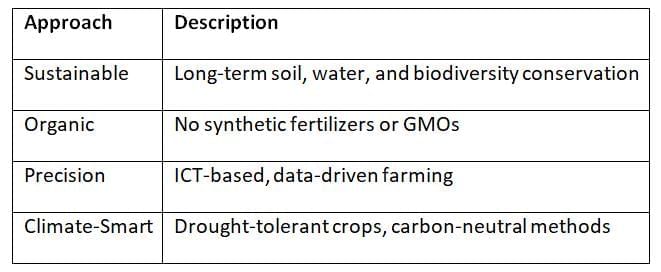
Agriculture & Global Economy
- Agriculture contributes to GDP, employment, exports (especially in developing nations).
- Role in trade blocs: WTO, FAO, global food supply chains.
- Challenges: climate change, land degradation, water scarcity, global price fluctuations.
Global Challenges in Agriculture
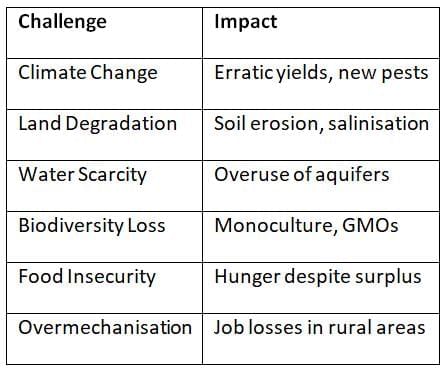
Agriculture in India (Brief Overview)
- 15% of GDP; ~45% of workforce
- Dominated by small holdings
- Green Revolution improved yields but created regional imbalances
- Major crops: Rice, Wheat, Cotton, Pulses
- Key concerns: water stress, price volatility, soil health
Key Concepts & Indices
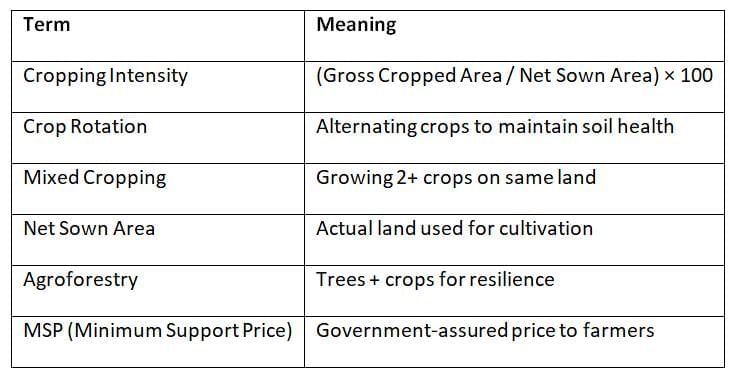
The document Cheat Sheet: Agriculture | Geography for UPSC CSE is a part of the UPSC Course Geography for UPSC CSE.
All you need of UPSC at this link: UPSC
|
264 videos|875 docs|232 tests
|
FAQs on Cheat Sheet: Agriculture - Geography for UPSC CSE
| 1. What are the different types of agriculture practiced globally? |  |
Ans. The types of agriculture practiced globally include subsistence agriculture, where farmers grow food primarily for their own consumption; commercial agriculture, focused on producing crops for sale; intensive agriculture, which maximizes yield on small plots of land; extensive agriculture, utilizing larger areas with lower input; and organic agriculture, which emphasizes environmentally friendly practices without synthetic chemicals.
| 2. How do agricultural systems vary around the world? |  |
Ans. Agricultural systems vary globally based on factors such as climate, soil type, cultural practices, and available technology. For instance, in tropical regions, plantation agriculture is common, focusing on cash crops like coffee and bananas. In temperate zones, mixed farming is prevalent, combining crop cultivation with livestock rearing. Each system adapts to local conditions to maximize productivity and sustainability.
| 3. What are the major crop zones globally and their characteristics? |  |
Ans. Major crop zones globally include the following:
1. The temperate zone, known for wheat, maize, and barley due to its favorable climate.
2. The tropical zone, characterized by crops like rice, sugarcane, and rubber, thriving in warm, humid conditions.
3. The arid zone, where crops such as sorghum and millet are cultivated, which are drought-resistant.
Each zone is defined by its climate, soil fertility, and agricultural practices.
| 4. What factors affect agricultural productivity? |  |
Ans. Agricultural productivity is influenced by various factors, including climate (temperature and rainfall), soil quality (nutrient availability and type), technology (mechanization and irrigation), economic conditions (market access and pricing), and social factors (labor availability and education). These elements interplay to determine the efficiency and output of agricultural systems.
| 5. What is the significance of sustainable agriculture in the global economy? |  |
Ans. Sustainable agriculture is crucial for the global economy as it promotes food security while minimizing environmental degradation. It involves practices that maintain soil health, reduce reliance on chemical inputs, and promote biodiversity. By ensuring long-term productivity and resilience against climate change, sustainable agriculture supports livelihoods, enhances rural development, and contributes to economic stability worldwide.
Related Searches




















